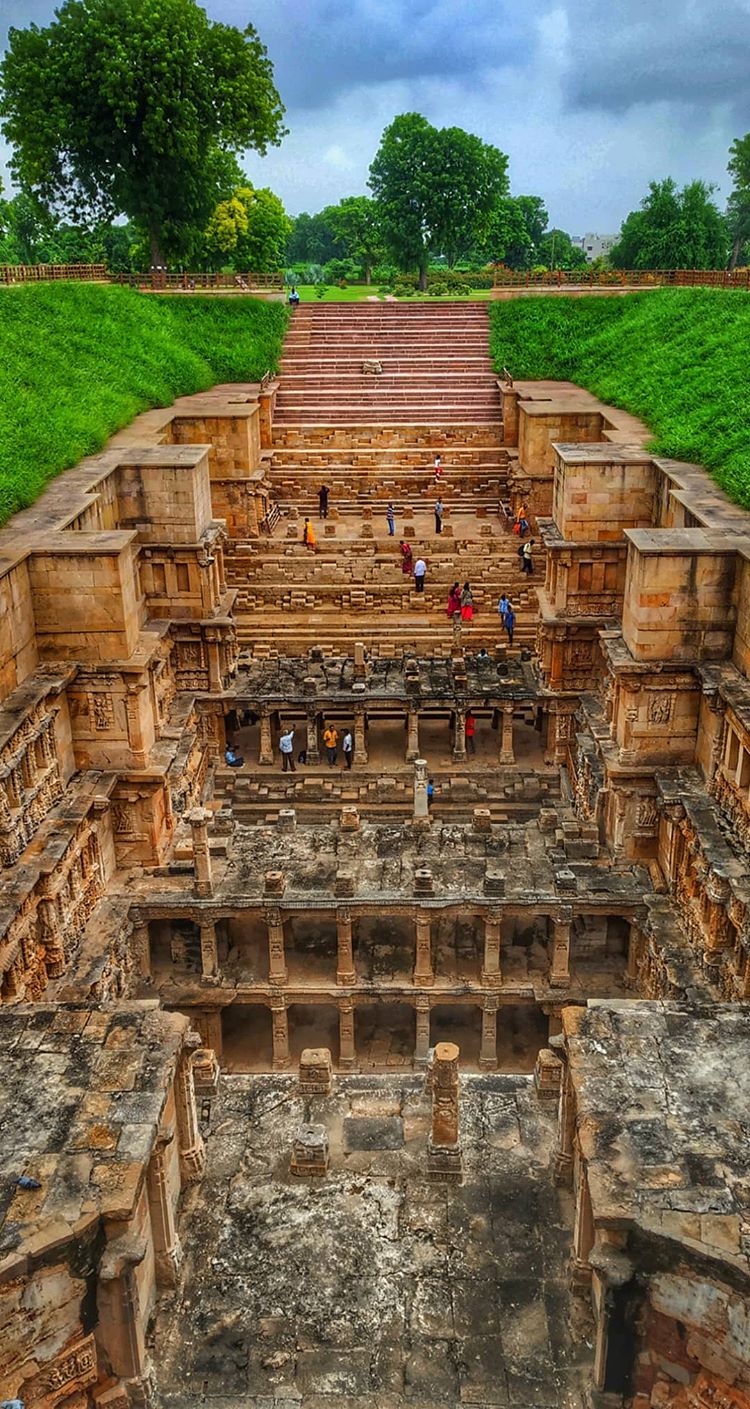Summary
An Intricate Architectural Marvel
Rani ki Vav, located in Patan, Gujarat, stands as a marvelous piece of ancient Indian architecture. Built in the 11th century, it was constructed in memory of King Bhimdev I by his widowed queen Udayamati. This stepwell plunges the visitor into a subterranean world with intricate carvings and a sophisticated design that has awed people for centuries. Its magnificent craftsmanship showcases the pinnacle of Maru-Gurjara architectural style. Each of its seven levels of walls is decorated with over 500 main sculptures and thousands of minor ones, depicting gods, goddesses, and mythological creatures. This enchanting site is much more than a water storage system; it’s a testament to the skill and artistry of the time.
Get your dose of History via Email
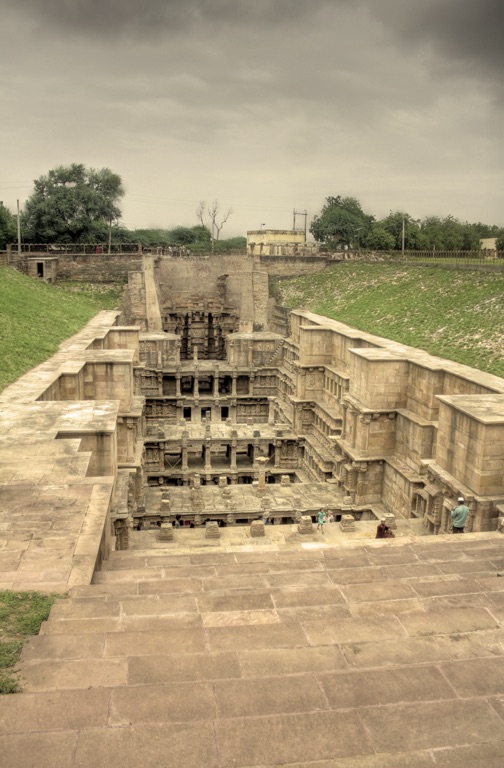
A Symbol of Knowledge and Spirituality
The theme of wisdom prevails at Rani ki Vav, symbolized through the representation of Saraswati, the goddess of knowledge. Serenely seated on a lotus, her presence indicates a reverence for learning and the arts that transcended simple utility. The stepwell also serves as a spiritual canvas with sculptural panels that tell enduring stories from Indian scriptures. Visitors can trace narratives from ancient texts, such as the Mahabharata and Ramayana, which embody traditional Indian values. Each sculpture seems to impart a lesson, standing as mute storytellers, guiding through a historical journey of valor, devotion, and enlightenment.
Ancient Innovation in Hydraulic Engineering
Rani ki Vav is not just a cultural wonder but an outstanding example of ancient innovation in hydraulic engineering. Designed as an inverted temple highlighting the sanctity of water, it combines practicality with sanctity. Its stepped corridors, once filled with crystal-clear waters, talk of a time when such innovative structures were integral to the community’s daily life. Today, this UNESCO World Heritage site continues to draw admiration for its ingenious integration of utility, reverence, and art. This stepwell stands as a reminder of the advanced understanding of hydraulics in a time that seems worlds away from contemporary technology but was nonetheless forward-thinking in its approach.
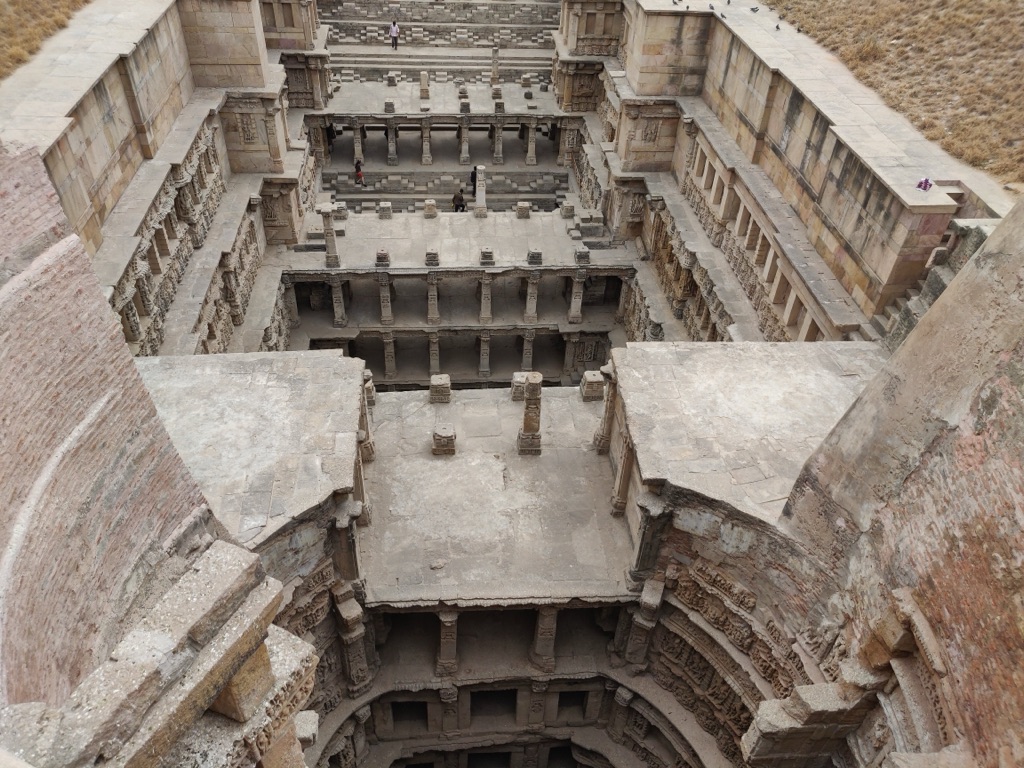
Historical Background of Rani ki Vav
The Genesis of a Subterranean Wonder
In the town of Patan, Gujarat, lies Rani ki Vav, a stepwell that marks a crowning achievement in ancient Indian architecture. Built in the 11th century by the widowed queen Udayamati, it commemorates her late husband, King Bhimdev I. Unlike other wells, this one is intricately carved and serves as a grand monument to love and devotion. With each descending step, one walks back in time to an era rich in art and cultural heritage. The grandeur of Rani ki Vav is reflected in its detail, drawing scholars and visitors alike to its depths.
An Ode to Maru-Gurjara Architecture
The design of Rani ki Vav embodies the essence of the Maru-Gurjara architectural style, characterized by intricate detailing. Every pillar, panel, and niche speaks volumes of the craftsmanship and artistry prevalent during the period. The walls are a canvas, exhibiting more than a thousand sculptures, all narrating tales from Indian mythology and scriptures. This stepwell is a library in stone, preserving the stories and traditions of a bygone truly golden age.
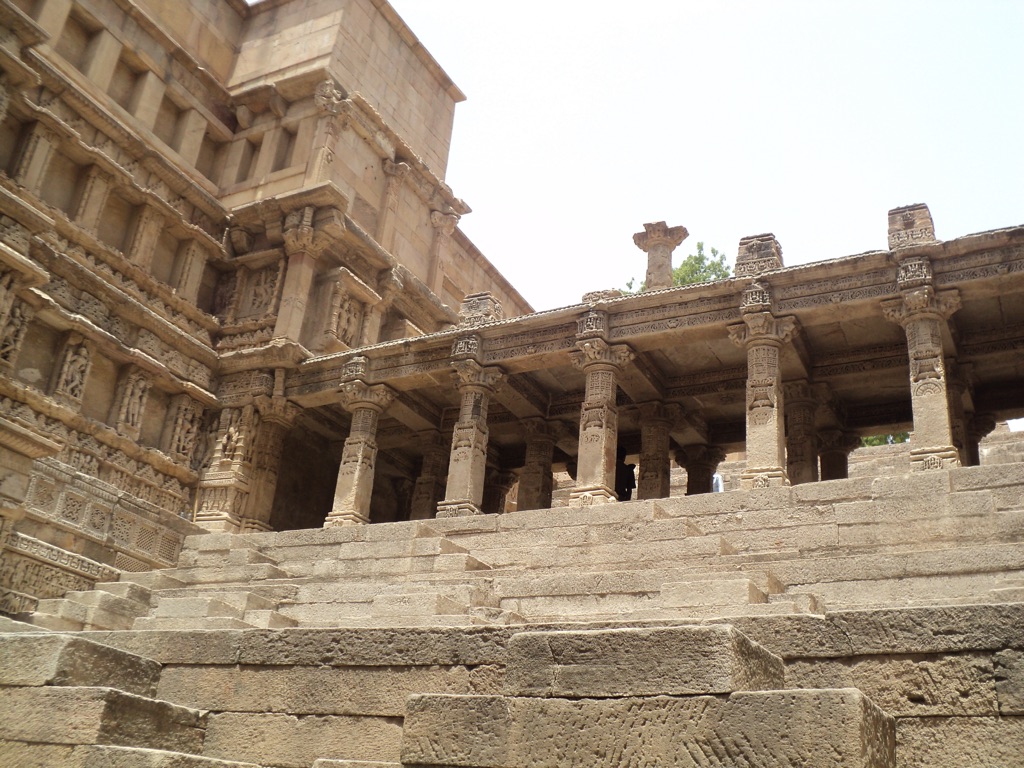
A Water Sanctuary in the Thar Desert
Amid the arid landscape of Gujarat, Rani ki Vav was an oasis. As a functional feature, the stepwell was a vital water source for the region. However, it was more than a mere reservoir; the Vav was revered as an aquatic temple. Steps lined with deities provided sanctity, and the water held was as pure as the spirits of the gods residing there. This innovative approach to water conservation blended seamlessly with spiritual reverence, showcasing the harmonious balance between function and faith.
The Rediscovery of a Lost Legacy
For centuries, Rani ki Vav lay hidden beneath the silt of the Saraswati River, its stories and beauty obscured from the world. It was only in the 1980s that the Archaeological Survey of India unearthed this architectural masterpiece. This rediscovery was akin to finding a buried treasure, one that shines light on the engineering marvels of historical India. Now a UNESCO World Heritage site, Rani ki Vav claims its place as a significant icon of India’s heritage.
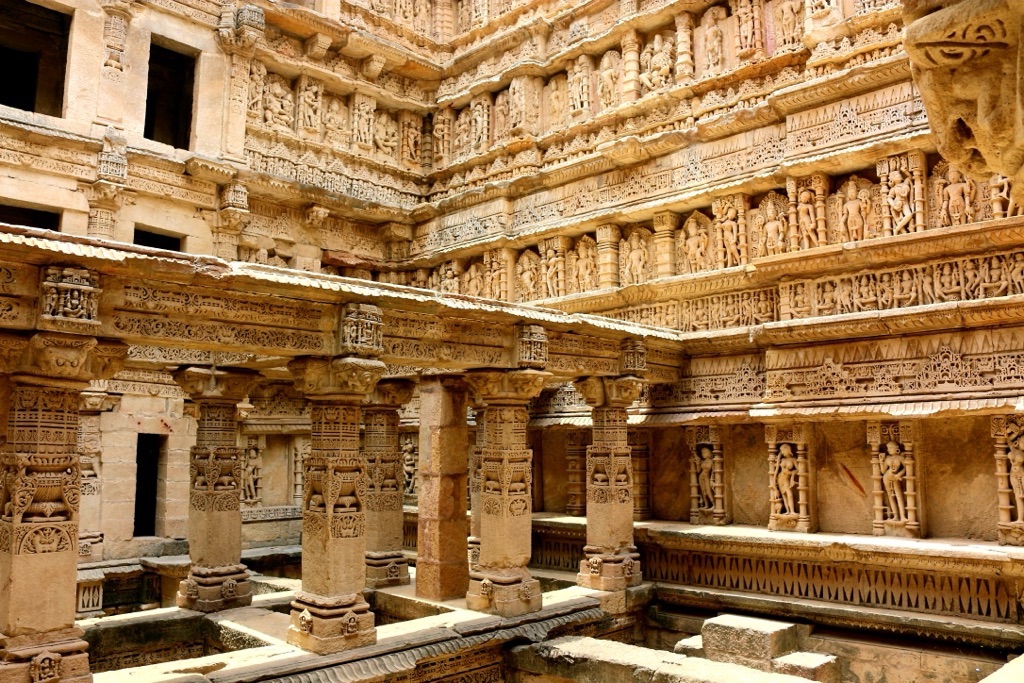
The Enduring Influence of Rani ki Vav
Today, Rani ki Vav continues to inspire awe and admiration. It is a place where history is carved in stone for eternity. The stepwell is not only a monument of the past but also a source of inspiration for modern architects and engineers. It embodies the perfect union of aesthetics, science, and spirituality, a structure that stands testament to human ingenuity. Rani ki Vav’s historical significance and enduring beauty ensure it remains a cherished part of India’s cultural landscape.
The Discovery of Rani ki Vav
Emerging from the Depths of History
The stepwell Rani ki Vav, buried for centuries, saw its magnificent chambers exposed to daylight once again in the late 20th century. The silt of the Saraswati River had concealed it, hiding a historical and cultural masterpiece beneath the surface. Excavations led by the Archaeological Survey of India took painstaking efforts to reveal the well. They worked tirelessly, removing layers of earth that had accumulated over the ages. The discovery underscored the significance of preserving historical landmarks. Moreover, it opened a new chapter in India’s rich architectural heritage. The uncovering of Rani ki Vav was a momentous event, igniting interest in India’s past worldwide.
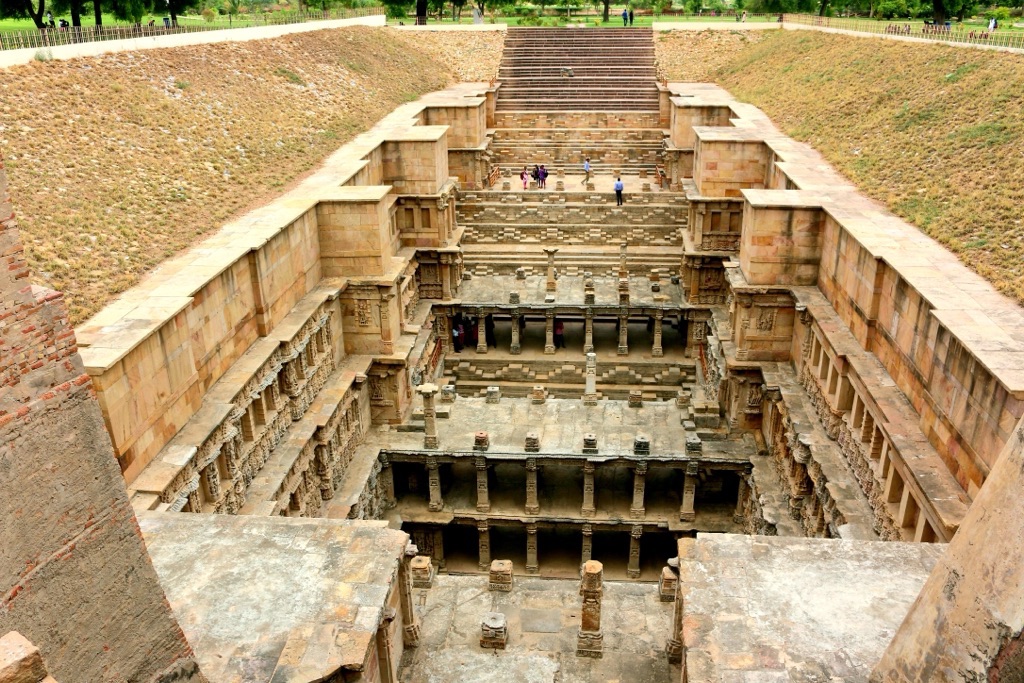
Unveiling the Architectural Splendor
Once the clearing process began, the true scope of Rani ki Vav’s grandeur became apparent. The walls of Rani ki Vav, adorned with elaborate sculptures, were in remarkable condition despite centuries of neglect. These carvings revealed the story of an ancient civilization’s skill and spiritual depth. Astonishingly, each sculpture and intricately decorated pillar remained intact, silently waiting to recount tales of the 11th century. This rediscovery was not just about unearthing an architectural structure. It was about bringing to light a piece of human history that had been long forgotten.
A Remarkable Feat of Conservation
The Archaeological Survey of India’s dedication to conservation played a critical role in the revival of Rani ki Vav. The stepwell achieves its spectacle not just through singular pieces but through its collective craftsmanship. After the excavation, preserving the integrity of the structure was paramount. The experts faced the challenge of preventing further decay, all the while respecting the original design. Ensuring that Rani ki Vav stood the test of time became a mission. Thanks to their efforts, future generations can now appreciate this stunning example of ancient engineering and artistry.
Rani ki Vav’s revelation was transformative for the local community and the broader understanding of India’s historical advancements. Once the site was opened to the public, it rapidly gained fame. Visitors from around the globe came to witness its beauty firsthand. This influx of interest provided both an economic boost and raised awareness about the preservation of other historical sites. Rani ki Vav’s emergence from obscurity highlighted the importance of safeguarding our world heritage.
Today, Rani ki Vav is not only a tourist destination but also a symbol of India’s commitment to historical awareness. The story of its excavation continues to inspire and educate, emphasizing the potential discoveries that lie dormant around us. From a forgotten relic to a celebrated monument, Rani ki Vav’s journey is a narrative of renewal, resilience, and the enduring legacy of human creativity.
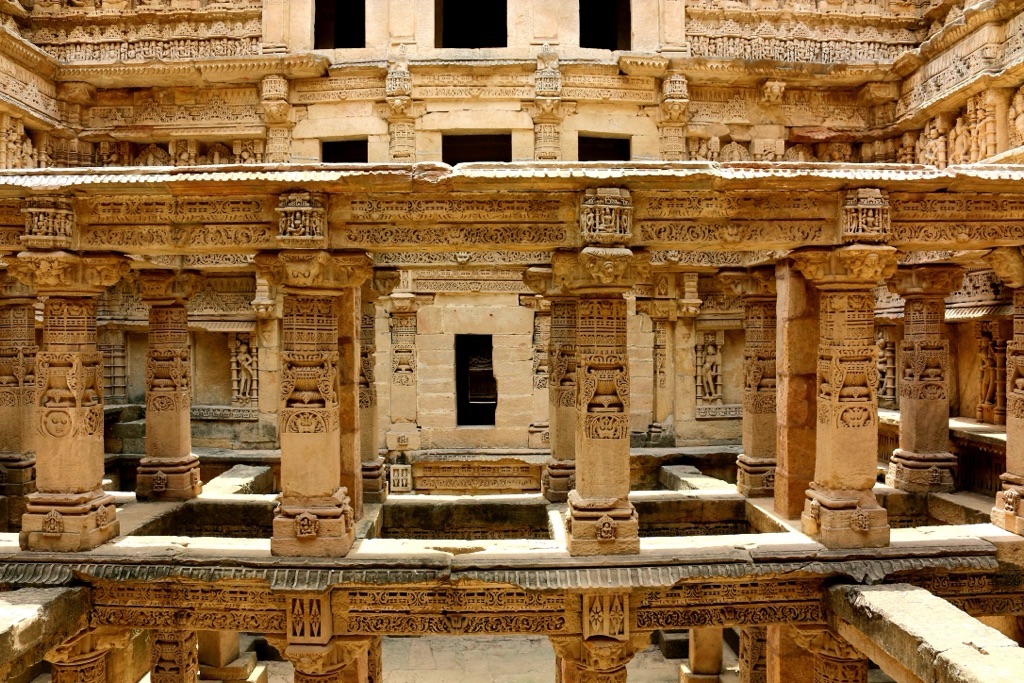
Cultural Significance, Dating methods, Theories and Interpretations
The Cultural Heart of Rani ki Vav
Rani ki Vav is not just an architectural wonder; it is a cultural treasure trove, reflecting the values and beliefs of its era. Deeply rooted in the spiritual landscape of Gujarat, it exemplifies the high esteem in which water was held in the arid region. Every carving, every deity etched into its walls tells a story, a piece of myth, a snippet of daily life. Larger-than-life depictions of Vishnu, Shiva, and other gods evoke a sense of reverence, serving as a conduit between the divine and the earthly realms. This stepwell was more than a mere utility – it was a place of worship and community where water, life’s most precious resource, was celebrated.
Tracing the Timeline of Construction
To ascertain the age of Rani ki Vav, experts employed a multitude of dating methods. The primary approach involved studying the architectural style and epigraphical evidence found within the stepwell. Cross-referencing these details with historical records pinpointed its creation to approximately the 11th century AD. The consistency of tool marks on the stone and carbon dating of organic materials found at the site corroborated this timeline. These investigative techniques allowed historians to construct a temporal context for Rani ki Vav, situating it firmly within the Solanki dynasty’s reign.

Theories and Mysteries Unfolding
Several theories circle around Rani ki Vav, contributing to its enigma. Some suggest its existence was not solely for water collection but also for protection during the hostile periods. Others infer it could’ve been a place for social gatherings. Most intriguing are the narratives that speculate on the stepwell’s astronomical alignments. The precise placement of certain sculptures hints at a deeper understanding of celestial movements. However, with minimal written records, these theories evoke more questions than answers, leaving experts to ponder the stepwell’s full significance and uses.
The artwork of Rani ki Vav is replete with symbolism, each intricately carved piece delivering insight into the Solanki era’s societal structure. Deities and their consorts, heavenly nymphs, and revered sages populate the walls, reflecting a time where faith and daily life intertwined seamlessly. Through thoughtful interpretation of these carvings, modern-day scholars peel back the layers of history, revealing the customs and traditions that shaped the lives of those who constructed this majestic structure.
With all its enigmas, Rani ki Vav remains an open book with many pages stuck together. Its cultural significance thrives through its stories – some sung, some whispered, and many yet to be understood. As research continues and theories evolve, the stepwell at Patan maintains a fluid narrative, offering fresh discoveries and insights that invite re-evaluation and wonder at every turn.
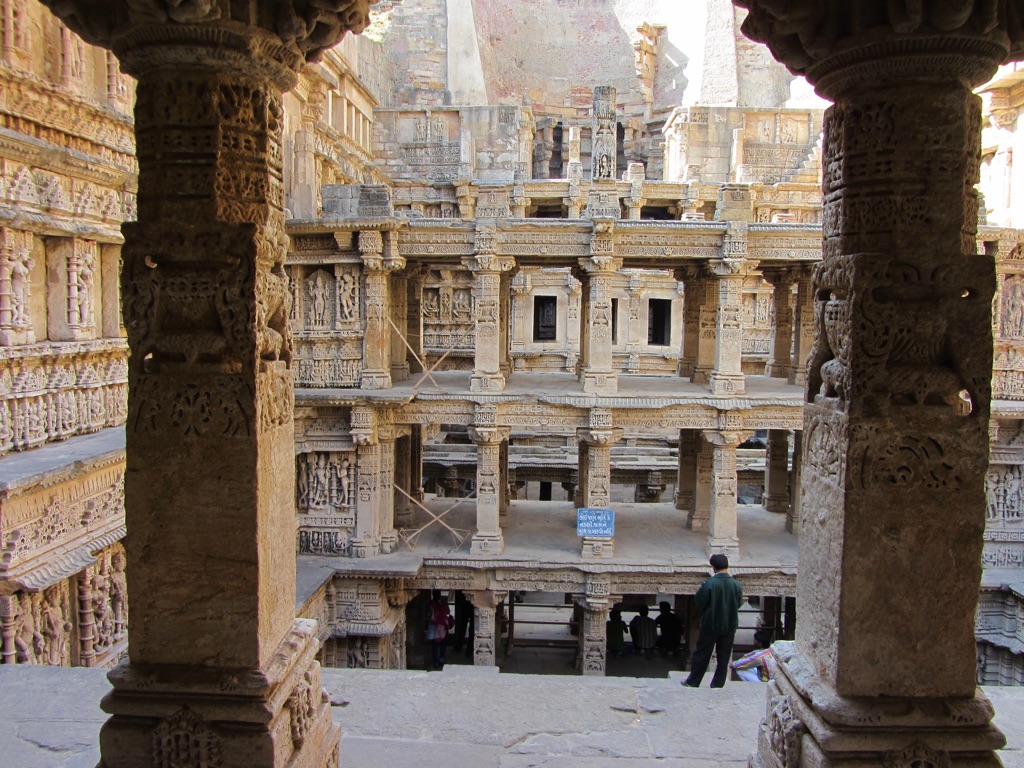
Conclusion and Sources
In conclusion, Rani ki Vav is an exceptional example of India’s rich heritage, offering insights into the ingenious spirit of past civilizations. It stands as a monument to both the architectural prowess and the cultural depth of the people who lived during the 11th century. The stepwell’s rediscovery and subsequent restoration have allowed us to revisit and appreciate this ancient marvel. Its presence continues to hold invaluable lessons in art, spirituality, and community-centric practices. Through the echoes of its storied walls, Rani ki Vav invites ongoing exploration and interpretation, remaining an important touchstone for historical and cultural academia.
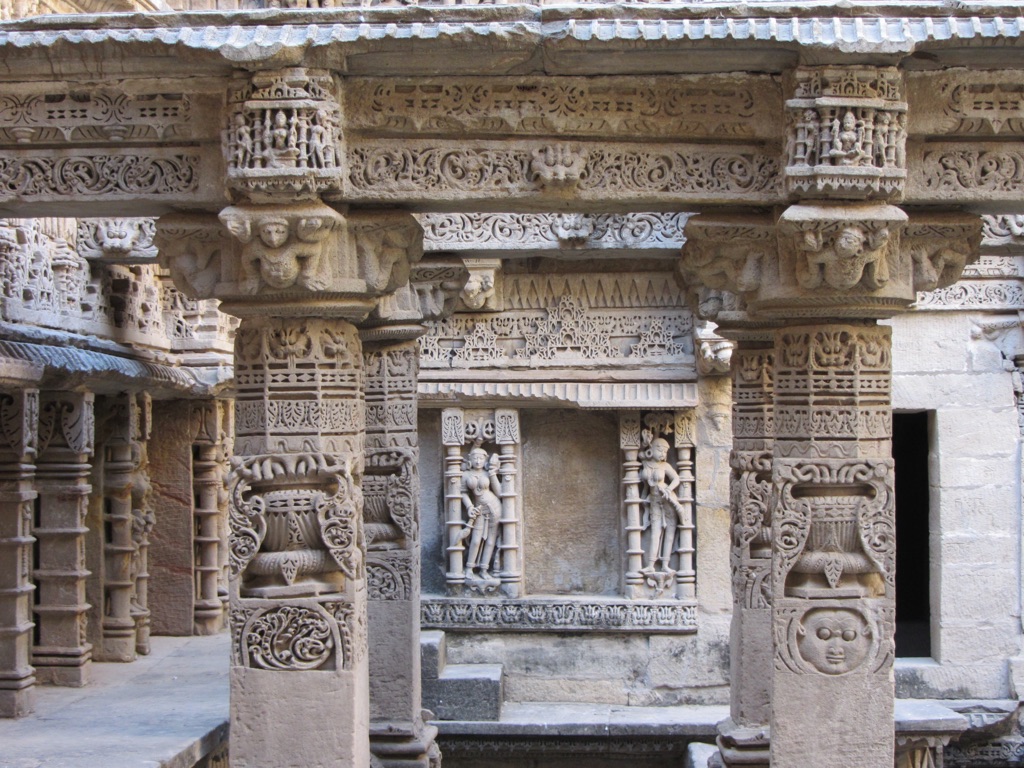
For further reading and to validate the information presented in this article, the following sources are recommended:
Or you can check any of these reputable archaeological and historical texts:
Michell, G. (1988). The Hindu Temple: An Introduction to Its Meaning and Forms. Chicago: University of Chicago Press.
Burgess, J. (1905). The Archaeological Survey of India: Western India. Calcutta: Superintendent of Government Printing.
Mankodi, K. (1991). The Queen’s Stepwell at Patan. Bombay: Project for Indian Cultural Studies.
Dhaky, M.A. (1961). The Indian Temple Trabeate. Baroda: Oriental Institute.
Livingstone, D., Beach, M.C., and Scholes, J.V. (2002). Steps to Water: The Ancient Stepwells of India. Princeton: Princeton Architectural Press.
Kramrisch, S. (1946). The Hindu Temple. Calcutta: University of Calcutta.
Tadgell, C. (1990). The History of Architecture in India. London: Phaidon.
Meister, M.W., and Dhaky, M.A. (Eds.). (1983). Encyclopaedia of Indian Temple Architecture. Philadelphia: University of Pennsylvania Press.

